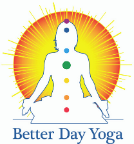 Mudra means “seal” in Sanskrit. It’s a symbolic or ritual gesture using primarily the hands. Each position is believed to have a specific effect. Specific positions can lead to specific states of consciousness symbolized by the hand positions. For example, if a person frequently and with feeling does a position of fearlessness, they will also be freed from fearfulness in time. Mudras are said to engage areas of the brain and/or soul influencing them, sometimes physically, by their use—not unlike an affirmation, or reflexology for that matter.
Mudra means “seal” in Sanskrit. It’s a symbolic or ritual gesture using primarily the hands. Each position is believed to have a specific effect. Specific positions can lead to specific states of consciousness symbolized by the hand positions. For example, if a person frequently and with feeling does a position of fearlessness, they will also be freed from fearfulness in time. Mudras are said to engage areas of the brain and/or soul influencing them, sometimes physically, by their use—not unlike an affirmation, or reflexology for that matter.
“One way that all of us can better care for ourselves is by developing techniques for coping
with the irritations and anxiety that are part of life…
Think of these gestures as self-talk for your hands. These simple movements, the gestures
that we often make unconsciously, can help us focus on our work, calm ourselves, release anger and energize us. Used for centuries by many different cultures, mudras are seen in Eastern dance and meditation, in ancient Egyptian friezes, even in Byzantine icons of Christ. Most of us use them today, too: we wave goodbye, we press a hand to our chest in distress, we wriggle our fingers to release energy, or press fingertips together to calm ourselves.
Easy to learn, mudras can be done anywhere, at any time: at traffic lights, in meetings, in
airplanes, when we’re arguing, when we’re grieving, when we need to prepare for sleep. The word mudra can be translated from the Sanskrit as that which brings inner peace, and that s what mudras are: a physical means of quieting our bodies.” Product description for Mudras: Ancient Gestures to Ease Modern Stress by Emily Fuller Williams.
Guidance mudra
This month’s focus is about asking for and receiving guidance from the Universe. It’s also about understanding your personality and characteristics so that you can work from where you are. So I chose the “Guidance” mudra from this month’s highlighted deck (see below).
Posture: Sit in Easy Pose with a straight spine, with a light Neck lock.
(To apply the neck lock: Sit comfortably with a straight spine. Lift your chest and sternum upward. Stretch the back of your neck gently straight by pulling the chin in toward the back of the neck. Keep your head level and centered without tilting forward or to either side, ie., don’t just bring the chin towards your chest. Keep the muscles of your face, neck, and throat as relaxed as you can.
The neck lock is automatically applied by the shift of relative position between the chin and chest. Do not force your head forward or down. It is common for new yoga students to stretch the neck when other parts of the body are not flexible. When you apply the neck lock, you allow your neck to be open and maintain its natural structure, which helps you maintain better spinal posture in general. The neck lock also “seals” the energy that is generated in the upper areas of your brain stem, so it becomes easier to focus and meditate.
Mudra: Extend the arms straight forward parallel to the ground. Palms face each other. Press the wrists together and spread the palms out with the palms and fingers as wide apart as you can, as though pushing against a wall. 
Eye Position: The eyes are slightly open looking down at the tip of the nose. (Note: This is why I am not looking at you in the photo!)
Breath & Mantra: Begin rhythmically chanting:
Sat Nam, Sat Nam, Sat Nam, Sat Nam, Sat Nam, Sat Nam, Wahe Guru.
Sat Nam rhymes with “but mom”. Sat Nam means truth is my identity. It is a seed mantra—these are single syllable sounds or roots like OM that have multiple meanings and indications depending upon their intonation and the intention with which they are used. Within the seed is contained all the knowledge of the fully grown tree. It is truth embodied in condensed form.
Wahe Guru: Wha-hay guroo. This is a mantra of the Infinity of ecstasy and dwelling in God. It expresses the indescribable experience of going from darkness to light—from ignorance to true understanding. Guru is the embodiment of the wisdom that one is seeking. )
Time: Continue for 11 minutes. (The meditation is typically concluded by inhaling and holding the breath briefly if you have no medical conditions that a breath hold would be contraindicated for. While the breath is held, apply root lock, then exhale and relax. After a meditation it is beneficial to lay on your back and relax, allowing time for your nervous system to integrate these changes.)
Comments: We cannot improve the caliber of the human being, but we can guide it. When we guide ourselves and are not at the mercy of subconscious habits then we become master of the self. But overcoming old habits and starting new ones requires strong nerves and willpower. This kriya develops willpower and gives the capacity to understand the elements of your personality. You can know what you are thinking and regulate the flow of those thoughts. This kriya is a perfect Sadhana (daily spiritual practice) for difficulty in completing projects and doing what you intend.
Source: Kundalini Blessings (Featured deck below)

